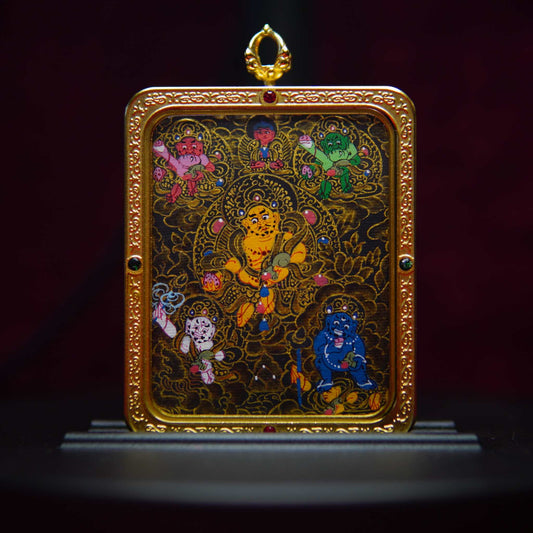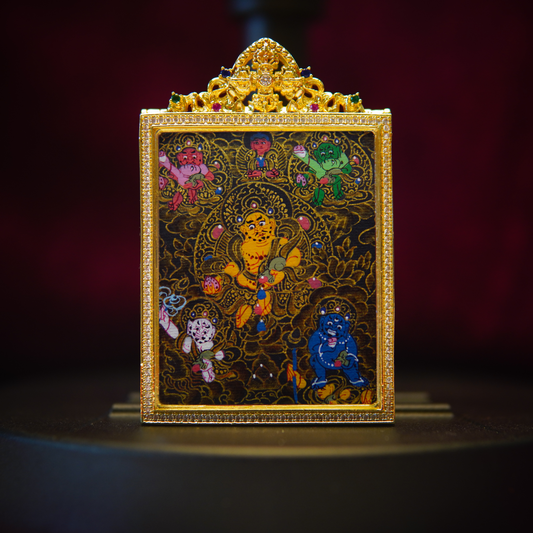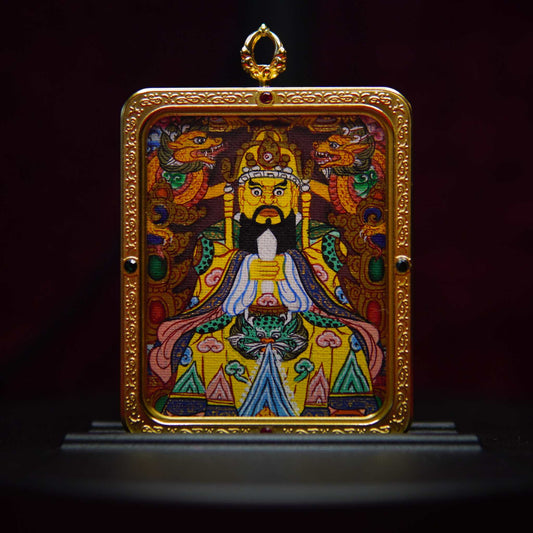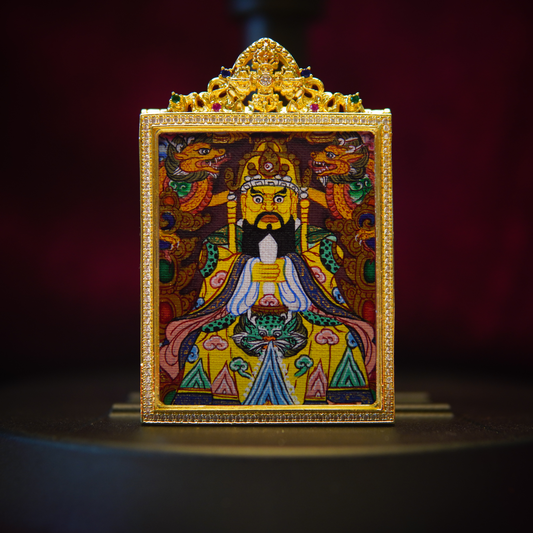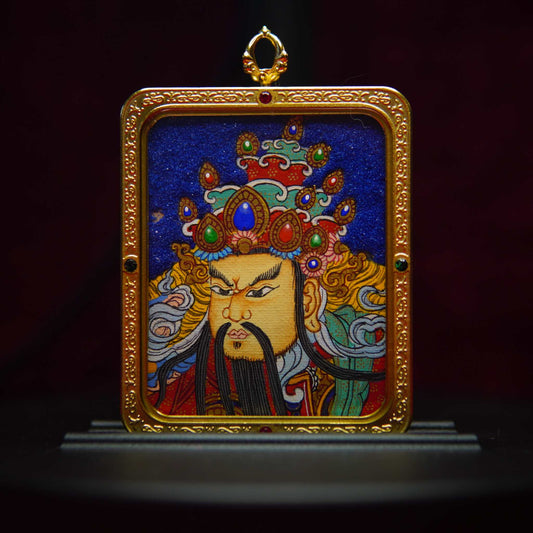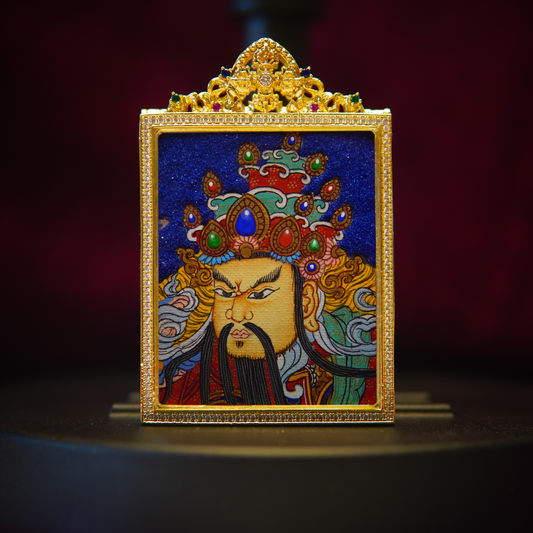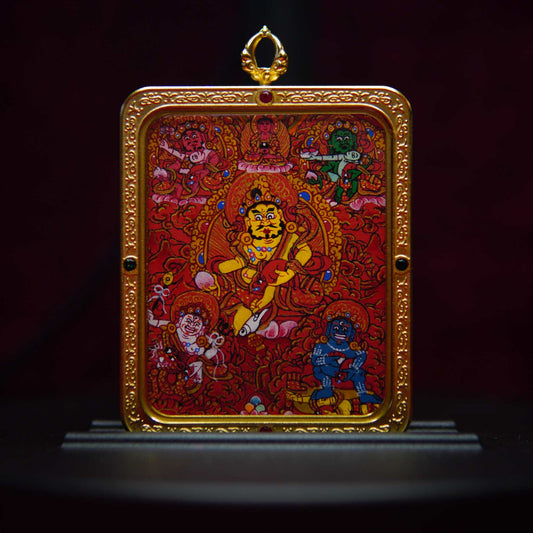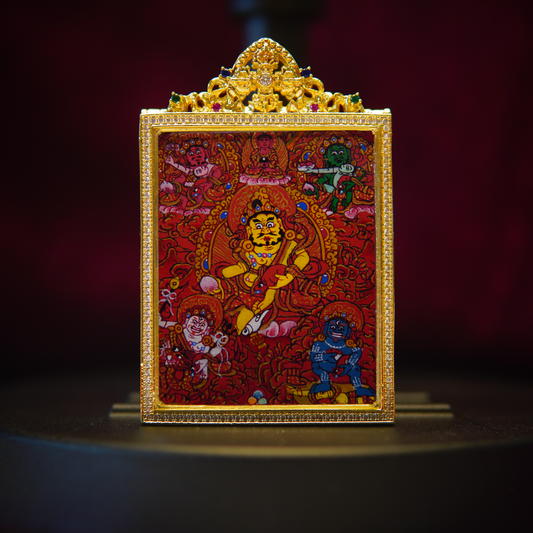Unlocking the Mysteries of Tibetan Thangka Art: A Colorful Journey
TapitaThe Ancient Tradition of Tibetan Thangka Art
Tibetan Thangka art represents one of Buddhism's most profound artistic traditions, dating back to the 7th century. These intricate devotional paintings serve as spiritual guides, meditation tools, and sacred objects of veneration within Tibetan Buddhist practice. Meticulously crafted on cotton canvas or silk, authentic thangkas embody centuries of artistic tradition while conveying complex philosophical concepts through vibrant imagery.
The word "thangka" derives from the Tibetan term meaning "thing that one unrolls," referencing their traditional scroll-like format that allowed for mobility among nomadic peoples. Each piece requires painstaking dedication, with master artists often spending months or even years perfecting a single work. This reverence for craftsmanship reflects the spiritual significance these artworks hold for practitioners.
Sacred Geometry and Symbolic Proportions
The creation of a thangka follows strict iconometric principles—precise mathematical formulas determining the proportions of deities, bodhisattvas, and other spiritual figures. These measurements aren't arbitrary but considered divinely ordained, with each dimension carrying symbolic weight. The grid system, known as "thig-tse," establishes perfect balance and harmony, reflecting the cosmic order these paintings seek to represent.
Novice artists spend years mastering these proportional systems before attempting to create their own works. The human form, particularly of enlightened beings, must adhere to these sacred ratios to properly channel spiritual energy and create an effective meditation tool. This mathematical precision distinguishes thangka art from more freeform artistic traditions.
Symbolism and Iconography in Thangka Paintings
Thangka art functions as a visual encyclopedia of Buddhist philosophy, with every element—from color choices to hand positions (mudras)—conveying specific meanings. Nothing appears by chance; each detail serves as a deliberate teaching tool. For the initiated viewer, these paintings reveal layered stories and profound spiritual concepts through their rich symbolic language.
Contemporary thangka pendants and jewelry adapt these traditional elements into wearable art, allowing practitioners to carry spiritual protection and inspiration with them throughout daily life. These portable devotional pieces continue the ancient tradition of making Buddhist wisdom accessible and present in all aspects of existence.
Colors and Their Spiritual Significance
The vibrant palette of thangka art isn't merely decorative but deeply symbolic. Artists traditionally used mineral pigments, often ground from semi-precious stones, to create colors with both visual brilliance and spiritual resonance:
- White (from calcium compounds): Symbolizes purity, wisdom, and spiritual awakening
- Blue (from lapis lazuli): Represents healing, infinity, and the boundless sky
- Red (from cinnabar): Conveys power, passion, and compassionate action
- Green (from malachite): Depicts harmony, balance, and spiritual accomplishment
- Gold (from gold leaf): Illuminates enlightenment, transcendence, and divine light
Modern thangka pendants often incorporate these traditional color associations, allowing wearers to align with specific energies or intentions through their choice of jewelry. A pendant featuring predominant blue elements, for instance, might be selected for its healing properties or connection to expansive consciousness.
The Meditative Process of Creating Thangka Art
The creation of thangka art transcends mere artistic expression—it constitutes a spiritual discipline unto itself. Master artists approach their work as a form of meditation, cultivating mindfulness with each brushstroke. This contemplative process transforms the act of painting into a devotional practice, with artists often reciting mantras or engaging in visualization exercises while working.
Before beginning a thangka, artists traditionally perform purification rituals and generate bodhicitta—the compassionate intention to benefit all sentient beings through their creative work. This sacred approach explains why authentic thangkas radiate a palpable spiritual energy that distinguishes them from purely decorative art forms.
From Canvas to Pendant: Miniaturizing Sacred Art
Translating the expansive tradition of thangka painting into wearable pendants presents unique artistic challenges. Artisans must distill complex iconography into miniature compositions while preserving essential symbolic elements. This adaptation requires not only technical precision but also deep understanding of which aspects carry the most spiritual significance.
Hand-drawn thangka pendants maintain the meditative approach of their larger counterparts, with artists working under magnification to render intricate details. Each piece becomes a portable sacred space, allowing the wearer to carry spiritual protection and inspiration throughout their daily activities.
"When wearing a thangka pendant, one carries not merely an ornament but a consecrated object that serves as a constant reminder of one's spiritual aspirations and connection to lineage teachings." - Lama Thubten Yeshe
Popular Deities and Figures in Thangka Jewelry
Thangka pendants typically feature central Buddhist deities whose qualities resonates with the wearer's spiritual aspirations. Understanding these divine figures enhances appreciation for these devotional accessories while helping practitioners select pieces aligned with their personal practice.
Avalokiteshvara: Embodiment of Compassion
Avalokiteshvara (known as Chenrezig in Tibetan) represents the perfection of compassion and stands as one of the most beloved figures in Mahayana Buddhism. Traditionally depicted with multiple arms—symbolizing his capacity to reach all suffering beings—this bodhisattva embodies the ideal of selfless service. Thangka pendants featuring Avalokiteshvara support practitioners developing greater compassion in their daily interactions.
Many pendants depict this deity in simplified form, often focusing on the four-armed representation holding a crystal mala and lotus flower. Some include the sacred mantra "Om Mani Padme Hum" inscribed around the figure, allowing wearers to carry this powerful invocation with them always.
Green Tara: Swift Protection
Green Tara, the feminine embodiment of enlightened activity, offers protection from both physical dangers and psychological obstacles. Her distinctive posture—right leg extended, ready to step down from her lotus throne—symbolizes her readiness to respond instantly to the prayers of devotees. Thangka pendants featuring Green Tara appeal particularly to those seeking protection during times of transition or uncertainty.
The vibrant emerald hue associated with this deity represents her connection to successful accomplishment and the overcoming of obstacles. Wearing her image serves as a reminder of one's own capacity for decisive, compassionate action in challenging circumstances.
Caring for Your Thangka Pendant
Thangka pendants, like their full-sized counterparts, represent consecrated objects deserving respectful treatment. Proper care ensures both their physical preservation and continued spiritual potency. Understanding traditional approaches to handling sacred art enhances one's relationship with these meaningful accessories.
| Care Consideration | Practical Guidance |
|---|---|
| Respectful Handling | Avoid wearing during activities that might be considered disrespectful (e.g., consuming alcohol, engaging in arguments) |
| Physical Maintenance | Clean gently with a soft cloth; avoid harsh chemicals or ultrasonic cleaners |
| Energetic Cleansing | Periodically purify with incense smoke or place briefly on an altar during meditation |
| Storage | Keep in a clean, designated place when not worn; traditionally wrapped in silk |
Many practitioners choose to have their thangka pendants blessed by a qualified lama or spiritual teacher, enhancing their connection to living lineage traditions. This blessing ceremony, known as "rabne," invites the actual presence of the depicted deity to inhabit the artwork, transforming it from mere representation to authentic spiritual support.
Choosing the Right Thangka Pendant for Your Practice
Selecting a thangka pendant involves more than aesthetic preference—ideally, it aligns with one's spiritual practice and personal aspirations. Traditional Tibetan Buddhism suggests developing a connection with specific deities based on temperament, challenges, and practice lineage. This thoughtful approach ensures your pendant serves as an authentic support rather than merely decorative jewelry.
Questions to Consider When Selecting a Thangka Pendant
When choosing your thangka pendant, reflect on these questions to find the most meaningful connection:
- Which quality do I most wish to develop in my spiritual practice? (compassion, wisdom, healing energy, etc.)
- Do I have a connection to a particular deity through my meditation practice or lineage teachings?
- What specific challenges am I currently facing that might be addressed through specific iconography?
- Am I drawn to a particular color energy or visual representation?
Remember that authentic thangka art—even in pendant form—establishes a relationship between practitioner and deity. This connection deepens over time through consistent practice and mindful engagement with the spiritual qualities the pendant represents. Many practitioners report feeling a growing resonance with their chosen thangka jewelry as their understanding of Buddhist principles matures.
The journey into Tibetan thangka art offers more than aesthetic appreciation—it provides a gateway to profound spiritual understanding through visual means. Whether worn as a devotional accessory or appreciated as cultural heritage, these miniature masterpieces continue a centuries-old tradition of making Buddhist wisdom accessible through the universal language of art.

